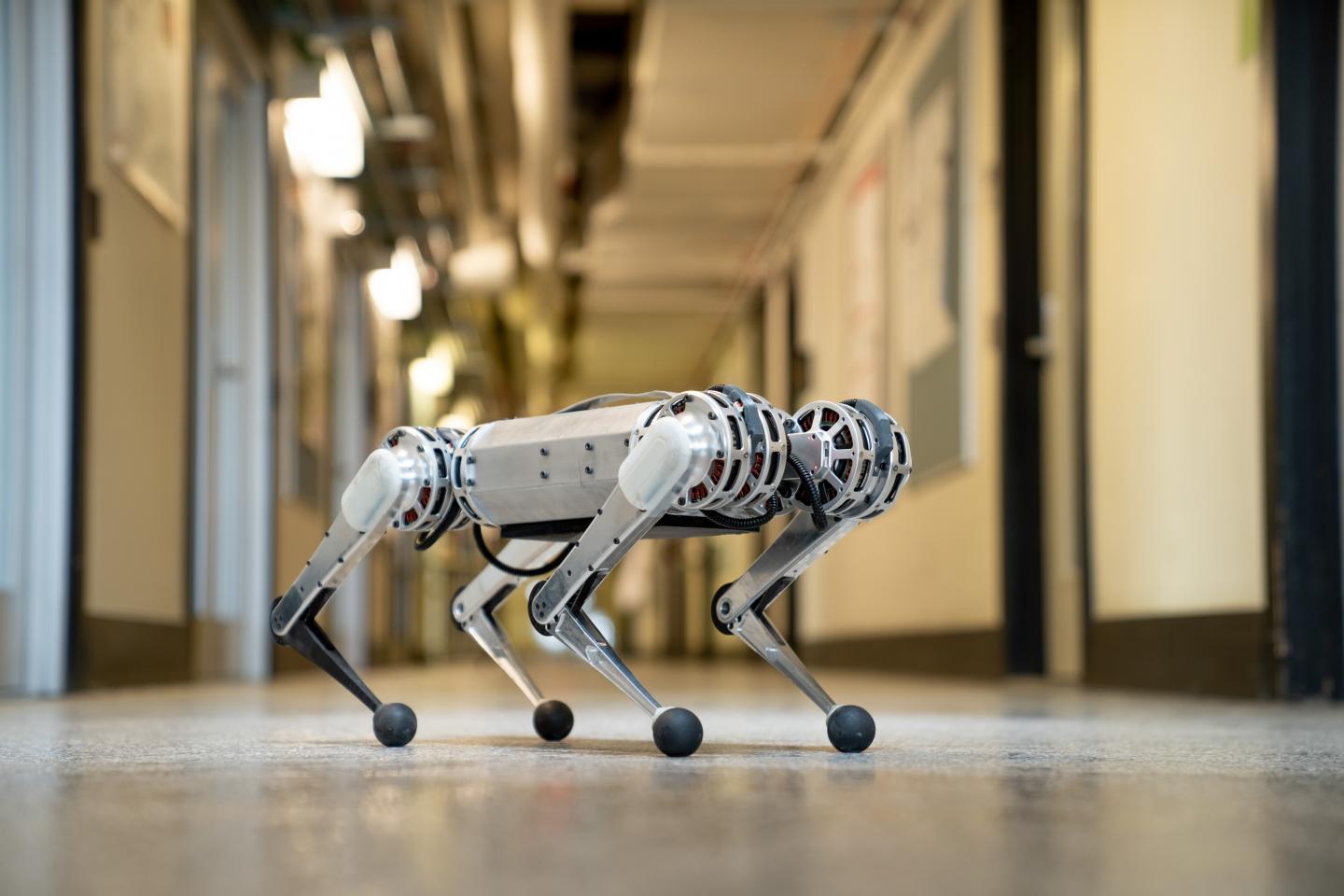
With the ability to run, climb stairs and jump over hurdles, the advanced capabilities of the Massachusetts Institute of Technology’s four-legged Cheetah robots have been impressing and alarming audiences in equal measures.
However, the latest invention from the robotics team at MIT may be the most novel yet. With the skill of a champion gymnast, the newly developed Mini Cheetah robot is thought to be the first ever four-legged robot capable of doing a backflip.
The Mini Cheetah is a smaller version of MIT’s Cheetah 3, whose signature move is its ability to blindly navigate obstacles just using touch without the need for cameras.
Videos of the robot, which weights just 20 pounds, show it running, trotting through a pile of fallen leaves, “pronking”, and spinning before performing its pièce de résistance: taking off from the ground, turning 360 degrees, and landing on its feet unharmed.
MIT’s Mini Cheetah pushes the boundaries of robot design
Certainly cuter than the larger and more sinister Cheetah robots, the impressive range of movement displayed by the Mini Cheetah also showcases cutting-edge robot design. The smaller model has a “high-torque, low-inertia design” meaning it can withstand higher-impact manoeuvres, making moves that would be almost impossible for a larger robot, and most humans, look easy.
Each leg is powered by three motors, to give it three degrees of freedom and a huge range of motion, meaning it can also execute fast, dynamic moves.
How well do you really know your competitors?
Access the most comprehensive Company Profiles on the market, powered by GlobalData. Save hours of research. Gain competitive edge.

Thank you!
Your download email will arrive shortly
Not ready to buy yet? Download a free sample
We are confident about the unique quality of our Company Profiles. However, we want you to make the most beneficial decision for your business, so we offer a free sample that you can download by submitting the below form
By GlobalDataResearchers claim the mini cheetah is designed to be “virtually indestructible,” recovering with little damage even if a back flip goes wrong.
The team has also coded the robot to stretch and twist in various, yoga-like moves, demonstrating its range of movement and ability to rotate its limbs and joints while maintaining balance. They also programmed the robot to recover from an unexpected force, such as a kick to the side.
Although the practical applications of a back-flipping robot may not be immediately obvious, the move demonstrates some key elements of successful robot design. Lead developer Benjamin Katz, a technical associate in MIT’s Department of Mechanical Engineering explains why they chose the particular move:
“We thought it would be a good test of robot performance, because it takes a lot of power, torque, and there are huge impacts at the end of a flip.”
Taking inspiration from Lego
By developing a robot that is both robust and inexpensive to build, it is easy to test out new ideas.
Each of the robot’s legs is powered by three identical, low-cost electric motors that the researchers engineered using off-the-shelf parts. Each motor can easily be swapped out for a new one, with one researcher describing putting the parts together as “almost like Legos”.
Unlike its earlier counterparts, the Mini Cheetah’s parts can be easily swapped out should they become damaged, and Katz explained that this makes it easier to modify the robot:
“In Cheetah 3, everything is super integrated, so if you want to change something, you have to do a ton of redesign. Whereas with the Mini Cheetah, if you wanted to add another arm, you could just add three or four more of these modular motors.
“A big part of why we built this robot is that it makes it so easy to experiment and just try crazy things, because the robot is super robust and doesn’t break easily, and if it does break, it’s easy and not very expensive to fix.”
The researchers will present the Mini Cheetah’s design at the International Conference on Robotics and Automation in May and are currently building a set of ten robots that can be loaned to other research groups to test out new algorithms and ways of moving.
Sangbae Kim, associate professor of mechanical engineering, envisages a way this could be tested involving some healthy competition:
“Eventually, I’m hoping we could have a robotic dog race through an obstacle course, where each team controls a mini cheetah with different algorithms, and we can see which strategy is more effective.”
So what is next for MIT robotics? Katz says that the team is now working on a robot that can withstand even more force, with the vision of developing a robot that could survive being thrown:
“We’re working now on a landing controller, the idea being that I want to be able to pick up the robot and toss it, and just have it land on its feet. Say you wanted to throw the robot into the window of a building and have it go explore inside the building. You could do that.”



